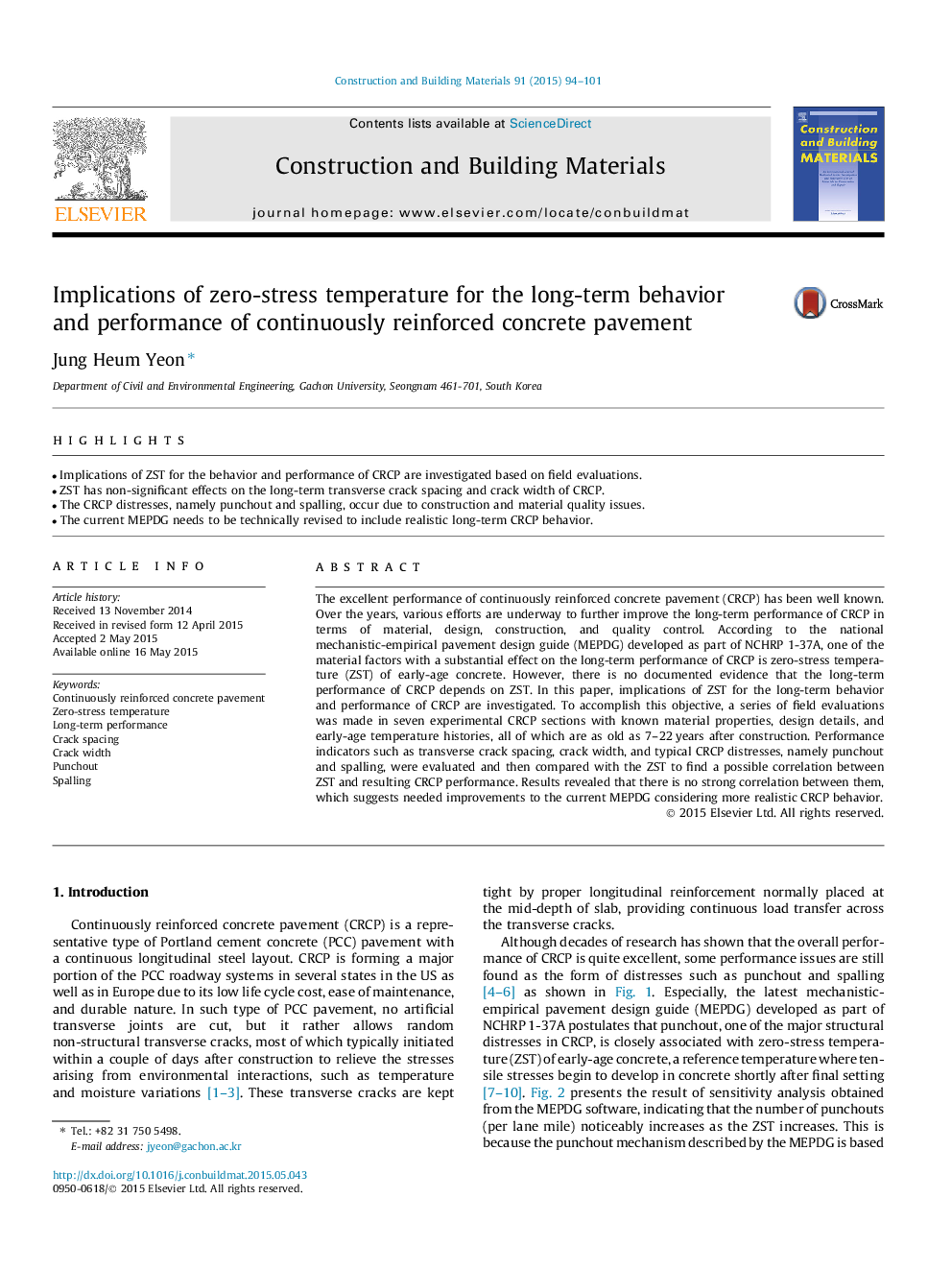| Article ID | Journal | Published Year | Pages | File Type |
|---|---|---|---|---|
| 256869 | Construction and Building Materials | 2015 | 8 Pages |
•Implications of ZST for the behavior and performance of CRCP are investigated based on field evaluations.•ZST has non-significant effects on the long-term transverse crack spacing and crack width of CRCP.•The CRCP distresses, namely punchout and spalling, occur due to construction and material quality issues.•The current MEPDG needs to be technically revised to include realistic long-term CRCP behavior.
The excellent performance of continuously reinforced concrete pavement (CRCP) has been well known. Over the years, various efforts are underway to further improve the long-term performance of CRCP in terms of material, design, construction, and quality control. According to the national mechanistic-empirical pavement design guide (MEPDG) developed as part of NCHRP 1-37A, one of the material factors with a substantial effect on the long-term performance of CRCP is zero-stress temperature (ZST) of early-age concrete. However, there is no documented evidence that the long-term performance of CRCP depends on ZST. In this paper, implications of ZST for the long-term behavior and performance of CRCP are investigated. To accomplish this objective, a series of field evaluations was made in seven experimental CRCP sections with known material properties, design details, and early-age temperature histories, all of which are as old as 7–22 years after construction. Performance indicators such as transverse crack spacing, crack width, and typical CRCP distresses, namely punchout and spalling, were evaluated and then compared with the ZST to find a possible correlation between ZST and resulting CRCP performance. Results revealed that there is no strong correlation between them, which suggests needed improvements to the current MEPDG considering more realistic CRCP behavior.
